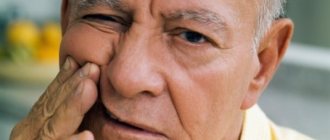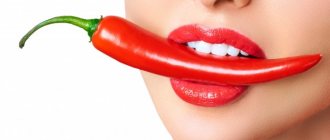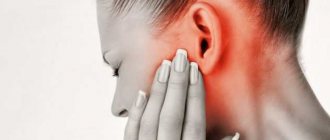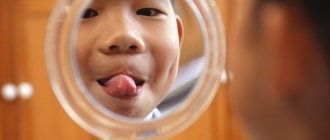What is the palate and where is it located in the oral cavity?
As mentioned above, this is a horizontally located partition that separates the oral cavity from the nasal cavity. Approximately 2/3 of its surface suggests the presence of a bone base. These are solid processes in the form of plates that have a concave shape and are located in a horizontal position on the upper jaw. They are covered by a thin mucous membrane, which turns into the velum palatine. This is already a muscular formation with a fibrous membrane, also covered with mucous membrane.
The upper palate is the wall located in the mouth from above in the horizontal plane
It is the soft part that represents the barrier between the mouth and pharynx, and on its far edge there is the uvula. The palate is directly involved in the process of chewing food and swallowing, helps in the reproduction of sounds, which makes it an important component of the articulatory apparatus.
Anatomy of the palate
The palate, located above, has two cavities - the oral and nasal. It includes two components - the hard and soft palate. The appearance of the upper palate resembles a dome.
There is a hard part of bone in front. The components are plate-shaped processes of the bone tissue of the upper jaw. From below, the palate is enveloped in mucous tissue, which in turn passes into the soft tissue of the palate, the so-called velum palatine. The location is very close to the tonsils, above the root of the tongue.
The soft palate is formed from muscles connected by connective tissue and mucous membrane. The cavity located behind the nose is divided into 2 entrances: into the laryngeal region and into the pharynx. The second entrance provides access to the trachea and esophagus.
Important ! With inflammation, pain affects both parts of the palate.
Discomfort is observed when speaking, swallowing food, and even at rest. For a person, these sensations are quite unpleasant. Where to go in such a situation? The first step is to consult a dentist. At the initial stage, he will determine the cause of the pain and refer you to the right specialist, or, if the case relates to his medical practice, prescribe the necessary treatment.
Video - More about the palate
Causes and symptoms of inflammation
At the initial stage of the pathological process, primary inflammation is diagnosed. First, blood circulation in the tissues is disrupted, and the person begins to experience moderate discomfort or even pain, which is especially noticeable when touching the palate with the tongue. Slight swelling appears. When the problem enters the stage of secondary inflammation, the pathological process takes over more space, and the pain noticeably intensifies. When the upper palate hurts, there can be a variety of reasons. Let us consider the main prerequisites in more detail.
Infections in the mouth
Infections of a bacterial and fungal nature (candidiasis) can provoke inflammatory processes, including on the mucous membrane of the palate. With this clinical picture, a whitish coating usually appears, painful ulcers, red areas and swelling may appear. If the problem is not addressed in time, the burning and pain will intensify, which will subsequently create serious difficulties in chewing food and swallowing.
The photo shows candidiasis in the mouth
Mechanical, thermal and chemical injuries to the mucous membrane
The palate is easily scratched by hard foods, such as seed shells or crackers. The problem may also be the appearance of a thermal or chemical burn after eating too hot food/drinks or sour, salty, spicy foods. Such microtraumas in conditions of insufficient hygiene become a favorable aid for the formation of pathogenic microflora and infection of tissues. The result will be redness and soreness. The mucous membrane usually swells, ulcers and blisters appear.
Dental diseases
Pathologies such as caries, pulpitis and stomatitis can also lead to the appearance of painful ulcers on the palate and along the entire perimeter of the mucous membrane. The inflammatory process often spreads to the surrounding soft tissues, including the palate and tongue, causing corresponding complications. A similar clinical picture also occurs with severe periodontitis or periodontal disease.
Another possible problem is leukoplakia, the development of which is accompanied by the formation of compactions in the mucous membrane and the appearance of dense whitish plaques, which can also be localized in the palate. The cause of this pathological phenomenon may be trauma, frequent rough mechanical impact on the mucous membrane, excessive smoking and consumption of low-quality alcohol.
The photo shows leukoplakia
Other Possible Prerequisites
In some cases, symptoms of inflammation appear after the installation of metal crowns or braces. Here, the appearance of redness, itching, and swelling can be provoked by the influence of galvanic currents and a corresponding change in the natural environment in the oral cavity. The reason why the soft palate in the mouth hurts may be associated with infectious diseases of the ENT organs.
It should also be noted that adult heavy smokers and those who abuse low-quality alcohol are especially susceptible to frequent dental problems. It also happens that inflammation of the palate is caused by disturbances in the functioning of the submandibular, sublingual and minor salivary glands. Sometimes, as a result of such disorders, various neoplasms arise in the oral cavity - from small benign to serious malignant tumors, including fibromas, papillomas, lymphangiomas and other painful phenomena. In any case, if you suspect a problem, you should definitely contact a specialist.
Diseases of the ENT organs can cause this symptom
The main signs of inflammation of the palate
Some symptoms of inflammation can reveal its nature. The color of inflamed tissue can tell a lot. Redness accompanied by enlarged tonsils indicates the presence of tonsillitis. Bubbles filled with clear exudate indicate herpes. Red ulcers covered with a white cheesy coating indicate a fungal infection.
Infectious diseases are almost always accompanied by unpleasant sensations - the palate hurts, swells, bleeds and burns when swallowing. Often, not only the palatine bridge on top swells, but also the tongue, which leads to increased salivation and problems with swallowing. As a result, irritation of the larynx and throat may begin, in which a burning sensation is felt, ulcers appear, pain and swelling occur. It becomes extremely painful to swallow food. Sometimes the gums begin to bleed, and in rare situations the body temperature rises.
The nature of the pain and the need to contact a specialist
If the roof of your mouth hurts, the nature of the course of this symptom usually depends on the cause that led to the inflammatory process. To understand what exactly caused this reaction, you will have to seek medical help. If this is simple damage from rough food, the wound may swell for several days, but the sensations will be tolerable, and the discomfort should gradually subside.
To speed up the healing process, experts recommend being careful when eating and rinsing your mouth with a light antiseptic solution or a soothing herbal infusion. You should consult your doctor personally about suitable medications for symptomatic therapy.
If the pain does not go away within 3-4 days and only gets worse, you should definitely visit a dentist. If the situation is ambiguous, the specialist will suggest undergoing a diagnostic examination. To determine the cause of the pathological process, you may have to undergo x-ray diagnostics, as well as visit other specialized doctors, for example, an ENT specialist, an infectious disease specialist, a therapist or an oncologist.
Mucosal injury
For any person, the cause of pain in the mouth can be ordinary injuries.
Trauma is often the cause of mouth pain.
For example:
- eating something too hot/cold. This injures the mucous membrane, and pain quickly appears in it. Inflammation indicates the presence of injury to the mucosa, caused by temperature exposure, and at the same time incompatible with its integrity. Eating something very hot can cause injury to both the palate and the tongue, as well as the throat;
- rough food, which can leave scratches on the roof of your mouth and on the inside of your cheeks. This causes pain and burning to appear after a day or two;
- A child has more ways to damage his or her mucous membrane than an adult. The baby can scratch it with his thin nail or put something in his mouth, for example, a toy. And if the child is somewhat older, his mucous membrane can be damaged by lollipops and chips.
When choosing a remedy for pain, it is very important to pay attention to the nature of the injury:
- in case of a burn, it is useful to rinse your mouth with warm water and then use Metrogil Denta dental ointment;
"Metrogil Denta"
- In case of mechanical damage, it is recommended to immediately use antiseptics by rinsing your mouth with them. For an adult, it is useful to rinse your mouth with a mixture: 10-15 drops of 3% hydrogen peroxide per glass of water. Decoctions of calendula and chamomile are also good. Also good are the drugs “Rotokan” and “Miramistin”, which fight infection as well as inflammation.
"Miramistin"
The main rule: no self-medication! Therapy must be prescribed by a specialist. Otherwise, you can make the situation even worse. So if symptoms appear, it is recommended to visit a doctor. He will prescribe the best treatment for a particular situation.
How is differential diagnosis performed?
As mentioned above, if the doctor has doubts about the cause of the symptoms, the patient will have to undergo a differential diagnosis. It is necessary to make a correct diagnosis, excluding all other pathologies with similar symptoms. As part of such a survey, the following activities may be required:
- visual examination and medical history,
- x-ray examination,
- general blood tests and allergy tests,
- consultation of specialized specialists,
- full examination of the body, including ultrasound and CT.
For diagnosis, it is necessary to undergo tests.
But such in-depth diagnostics are not needed in all cases. If the clinical picture is obvious, the doctor will not require additional procedures. However, it is very important to establish an accurate diagnosis, because the further course of treatment will directly depend on it.
What to do if your palate hurts. Treatment methods
First of all, it is necessary to treat exactly what served as the impetus for the development of the pathological process. As part of supportive symptomatic therapy, special solutions for oral baths and mouth rinses are usually prescribed. These may be antibacterial, anti-inflammatory or antifungal agents, depending on the nature of the problem.
Gels and ointments are also often prescribed for external use, with a similar therapeutic effect or, for example, antihistamine action, if swelling, redness and itching are an allergic reaction. If a serious infection occurs, your doctor may prescribe antibiotics. It is important to remember that only a professional doctor can select adequate treatment in your particular case.
Various gels may be prescribed for treatment
Why does pain occur?
Painful sensations can be disturbing for many reasons: pathological processes occurring inside, infectious lesions, functional disorders. There are cases when pain is caused by high tissue sensitivity, due to cold or hot food, or poor cleaning of the oral cavity. The mouth is an ideal environment for bacteria to multiply, so even a minor irritation or sore can develop into more serious problems.
According to dentists, there are ten main reasons that cause pain in the roof of the mouth.
- Infection caused by bacteria. The palate becomes filled with blood, swelling and a dirty gray coating appears, and ulcers cause discomfort.
- Inflammation of the tonsils, sore throat. Often the symptoms are the same as in the first case. If the disease is neglected, complications related to the heart and joints are possible.
- Stomatitis. The disease is characterized by a yellow coating, pain when chewing, possibly increased salivation, and painful ulcers.
- Leukoplakia is a pathological condition of the oral cavity that occurs due to eating food with a contrasting temperature. It is caused by injuries to the mucous membrane. It is considered to be a pre-cancer condition.
- Smoking. During smoking, the mucous tissues of the oral cavity suffer from the increased temperature of inhaled smoke and its components. Tappeiner's leukoplakia is a common occurrence in smokers.
- The salivary glands become inflamed as a result of infectious components entering the oral cavity. In this case, the submandibular, sublingual and minor glands responsible for salivation are affected.
- Neuralgia, pathological conditions of the joints. Soreness is usually felt in the teeth, gum tissue, and face.
- Sialometaplasia is a benign neoplasm that occurs in the tissues of the oral cavity. A pain syndrome occurs, when a certain size is reached, the tumor spontaneously bursts, and an ulcer forms in its place.
- Unsatisfactory performance of treatment or tooth extraction, careless placement of a prosthesis for the patient.
- Chemical and thermal burns caused by inattention.
What drugs are used in different clinical cases
The choice of treatment must be justified by the cause of the problem. So, all the drugs that are prescribed if the palate is inflamed or if the gums also hurt can be divided into 3 large groups:
- antifungal: these include broad-spectrum antimycotics that effectively combat the development of candidiasis and trichomonas. They are usually prescribed for trauma to the mucous membrane, for stomatitis and thrush - “Levorin”, “Nystatin”, “Candide”,
- antibacterial: these include antibiotics that specifically prevent the proliferation of bacteria and pathogenic microorganisms. So, for example, “Metronidozole” and “Amoxicillin” can only be prescribed by a doctor, and their help is usually resorted to when there is a serious infection of tissues and an increase in temperature. But antibacterial rinsing solutions are used as maintenance therapy, and these include “Chlorhexidine”, “Stomatofit” and others,
- antiviral - as a rule, used in the early stages of the disease and for preventive purposes, they suppress the reproduction of viruses. Such drugs include “Acyclovir”, “Oxolin”, “Interferon”1.
Drugs can only be prescribed by a doctor.
Any of the above drugs, and especially antibiotics, can only be taken as prescribed by a doctor. Remember, if suspicious symptoms appear, it is better to consult a doctor immediately. The longer you delay visiting a specialist, the higher your chances will be of encountering very serious consequences and complications.
Initial and recurrent inflammation
Inflammation of the palate at the primary stage appears for a number of reasons that caused this pathology, and due to the activation of biological components-mediators at the damaged site.
Physiological processes occur in the mucous membrane of the palate, which are disrupted due to primary inflammation. As a consequence, destruction of cell membranes, transformation of structure, disruption of reactions.
Important ! Cells exposed to such destructive effects react differently.
During the development of the primary stage of pathological changes, decay products are released that interfere with normal blood flow and the functioning of cells of the nervous system. Mediators of the inflammatory process influence trophic and plastic factors.
The secondary stage is considered more severe: it enhances the effect of pathogenic agents, the localization of inflammatory mediators becomes the area around the previously affected area. Agents of secondary infection are present in cell membranes, and it is they that predict the further development of the disease and possible complications. There may be an accumulation of incompletely oxidized waste products - this occurs due to the activation of the protective functions of cells against pathogenic cells.
Gels and ointments for treating inflamed mucous membranes
External agents, which include gels and ointments, are also prescribed to relieve pain and acute signs of inflammation. Below, as an example, are the most effective and popular drugs from this pharmacological group:
- “Nystatin” ointment - it is prescribed for candidiasis. The active ingredients in the composition destroy fungal cells and create a reliable barrier that prevents the further spread of infection,
- "Levomekol" ointment - has an antibacterial effect and promotes tissue regeneration processes. The active components of the product help reduce inflammation and actively fight the population of harmful microorganisms,
- “Solcoseryl” – this product contains an extract of calf’s blood (dialysate), which has a powerful therapeutic effect. The gel restores oxygen metabolism, triggers tissue regeneration processes at the cellular level and promotes collagen production, thereby accelerating damage processes,
- "Cholisal" is an anesthetic gel with a slight cooling effect. Helps relieve swelling and inflammation, destroys pathogenic microflora.
Gels and ointments are prescribed to relieve pain and acute signs of inflammation.
The choice of a suitable remedy remains at the discretion of the attending physician and directly depends on the cause of the development of the inflammatory process in the palate. Before use, you should carefully read the instructions and then follow all the instructions of the treating specialist.
A Brief Overview of Mouthwashes
Pharmacy rinses help relieve acute signs of inflammation, relieve pain and reduce swelling. Among the most effective drugs in this category, experts identify the following medications:
- Chlorhexidine is an inexpensive antimicrobial agent that helps to significantly reduce inflammation and stop the spread of infection. It is recommended to use for rinsing no more than 3 times a day,
- “Stomatofit” is a herbal remedy that helps with gingivitis and periodontitis,
- "Furacilin" - prescribed for inflammatory processes in the throat, palate and oral cavity. Has a pronounced antimicrobial effect and ensures the destruction of pathogenic microflora,
- “Chlorophyllipt” - a composition based on eucalyptus helps to soothe an irritated throat and palate during colds.
Pharmacy rinses help relieve acute signs of inflammation
“For some reason, my palate gets irritated about once every six months. I don't know, maybe it's too sensitive. And it happens that the pain is simply unbearable, you have to swallow painkillers. But in such cases, I usually rinse my mouth with chlorhexidine and after a week everything goes away completely.”
MariaS., from correspondence on the forum www.32top.ru
You should start using any of the drugs described above only after consulting a specialist. First, you should visit your dentist and determine the exact cause of the inflammation.
Prevention of infectious lesions of the upper palate
It is easier to prevent inflammation of the palate than to cure its advanced stage. To do this you need to do the following:
- Limit the intake of solid foods - crackers, caramel, chips, lollipops, cookies. They can accidentally scratch the oral mucosa.
- Wash vegetables and fruits thoroughly. By consuming dirty foods, you can introduce infection into wounds and scratches on the oral mucosa, which can lead to the development of inflammation.
- Eliminate excessively cold and hot foods from your diet so that they do not burn the soft tissues in your mouth. This rule must be followed if the palate is already inflamed.
- Stop drinking sweet soda, as it irritates the oral mucosa. Strong alcohol has the same effect.
- Brush your teeth regularly. Brushing your teeth twice a day will not only protect against caries, but also prevent bleeding gums and the appearance of swelling near the uvula. You should also rinse your mouth after every meal, especially if your palate is already swollen.
- Constantly strengthen your immune system. You need to exercise, eat natural foods, plan your diet wisely, ensure regular good sleep and monitor the replenishment of vitamins and microelements.
- Treat your teeth regularly. To make your teeth strong, it is not enough to brush them daily and eat right. In addition, you should visit the dentist 2 times a year to undergo preventive examinations, remove tartar and plaque, and promptly treat caries and gingivitis (gum inflammation).
- Consult a doctor for any symptoms of dental diseases and pathologies of the ENT organs: if the throat turns red, the tonsils become swollen, signs of inflammation begin to be felt, wounds, ulcers and swelling appear in the mouth, and pain occurs in the palate.
- Monitor the condition of children's teeth. This rule applies to parents. It is worth explaining to your child that you should not put your hands or dirty objects in your mouth. Explain why exactly you shouldn’t do this.
Every person should take care of their oral health. Maintaining immunity, proper nutrition, good hygiene and timely visits to the dentist will help completely eliminate the risk of developing diseases of the palate and the appearance of pain in this area. If the inflammatory process has already begun, you should urgently consult a doctor and follow all his treatment recommendations.
Category Miscellaneous Published by Mister dentist
What does traditional medicine offer?
Some remedies prepared from herbal ingredients based on folk recipes also help relieve inflammation and reduce pain in the palate. Tannins and astringents in their composition have a disinfectant and analgesic effect. The most popular and proven recipes are described below, but it is better to first discuss their use with your doctor.
Calendula tincture
Used for pharyngitis, laryngitis, tonsillitis and fungal infections in the oral cavity. To prepare the tincture, you can dissolve a teaspoon of the product in 200 ml of warm water. Or pour raw calendula flowers with a tablespoon of boiling water, strain and use for rinsing while warm.
Calendula tincture will relieve pain
Chamomile decoction
Soothes, relieves acute inflammation, helps with colds and fungal infections. A tablespoon of dried flowers is brewed in 200 ml of boiling water, allowed to cool, filtered and used for rinsing 3-4 times a day.
Chamomile decoction helps well in treatment
Sage based rinse solution
Recommended for laryngitis, as well as for scratches on the palate, pharynx or larynx. The solution perfectly relieves inflammation and relieves pain. Sage leaves and flowers (1-2 tablespoons) are brewed in 200 ml of boiled water. The product is infused until it cools completely, then filtered and then used for rinsing up to 6-7 times a day.
Oak bark decoction
Effectively relieves bleeding and inflammation, eliminates swelling. To prepare the solution, 2 tablespoons of crushed oak bark are diluted in 200 ml of water and heated in a water bath for 15-20 minutes. Remove, leave to brew for an hour, filter and then use for rinsing 4-5 times a day.
Gargling with a decoction of oak bark will help in treatment
Honey with tea or milk
Honey has an enveloping and soothing effect and effectively fights the proliferation of fungi and the spread of infection. To enhance the healing effects, it is recommended to eat honey with a warm drink or dilute it in tea.
You can relieve pain in the palate and reduce inflammation with the help of a medicinal mixture, for the preparation of which butter and honey should be mixed in equal proportions. The composition must cool completely, after which it can be taken 0.5-1 teaspoon 5-7 times a day.
Tea with honey is used to treat throat
First aid for stomatitis
The most common cause of pain in the oral cavity is stomatitis.
Note! All of the medications listed are suitable only for relieving pain, but not for treating stomatitis itself. So you should still contact the dentist as soon as the opportunity arises.
The doctor will prescribe a comprehensive treatment for pathologies
The hospital uses complex treatment. This includes physiotherapy, as well as the following types of medications:
- anti-inflammatory;
- antibacterial;
- antiviral;
- proteolytic enzymes.
To alleviate the symptoms of this disease at home, painkillers are useful, as well as mouth rinses to get rid of inflammation.
It is also useful to use painkillers at home:
- How to rinse your mouth for stomatitis in adults
- "Analgin";
- "Tempalgin";
- "Panadol";
- paracetamol;
- aspirin.
Important ! The latter is also good as a means to combat inflammation.
To relieve discomfort, it is recommended to use painkillers
Possible complications
Severe consequences of the pathological process are possible if you ignore obvious symptoms for too long and do not consult a specialist in time. The following manifestations become frequent accompaniments of inflammation of the palate mucosa:
- increased salivation,
- further spread of the lesion,
- the appearance of bad breath,
- bleeding gums,
- purulent processes.
In severe cases, the body temperature rises and there is a real risk of developing sepsis, that is, a general infection of the body. Such dangerous complications can result from tonsillitis, stomatitis, candidiasis or any other dental disease.
Therefore, if you experience pain in the oral cavity, you should immediately see a specialist. If it is a simple wound, the doctor will recommend suitable disinfectant, anti-inflammatory and wound-healing rinse solutions. If the reason is not so obvious, you will have to undergo a full examination and receive direct recommendations from a specialist.
1Lukinykh L.M. Diseases of the oral mucosa, 2000.
Treatment options for inflammation and pain in the palate
Some causes of inflammation of the palate are quite dangerous, so treatment should begin immediately after diagnosis. Treatment tactics depend on why the mucous membrane lining the upper part of the oral cavity is inflamed.
In case of mild mechanical or thermal damage to the palatal tissues, you can rinse your mouth with a solution of soda and salt or tinctures and decoctions of herbs: chamomile, sage, oak bark. To relieve pain caused by a person burning the oral mucosa while tasting a dish, it is enough to rinse your mouth with cold water or a soda-salt solution.
If the palate is quite inflamed, you should resort to the use of local anti-inflammatory and analgesic medications. To quickly remove pain and itching, you should supplement traditional drug therapy, and also eliminate the risk of infection in small scratches and sores.
To get rid of inflammation of the palate, you should treat not only the symptoms, but also the disease that provoked its appearance. For example, if you have a sore throat, you need to take antibiotics; the therapeutic course can last 1–2 weeks. Fungal diseases are treated only with antifungal drugs in the form of ointments, sprays and gels. Viral - antiviral. All infectious pathologies indicate a weakened immune system, and therefore require a therapeutic course to strengthen it.
If the palate is inflamed due to dental caries or pulpitis, treatment by a dentist will be required. A person will not be able to get rid of the disease until his teeth are treated, since caries is a constant source of infection in the mouth.
Essential medicines
Wounds and ulcers formed due to inflammation of the upper palate should be treated with antiseptics, for example, Rotokan, Chlorhexidine or Furacilin. The following drugs fight fungal inflammation:
- Viferon, Pimafucin and Nystatin ointments.
- Clotrimazole cream.
- Nizoral.
- Borax with glycerin.
If the roof of your mouth hurts too much, you can make warm infusions for rinsing with chamomile, propolis, eucalyptus or oak bark at home. But it is better to purchase an anesthetic in the form of a spray at the pharmacy: Hexoral, Lidocaine Asept or Benzocaine. Dental gels such as Cholisal, Lidochlor, Kamistad have mild analgesic properties. Their main function is to relieve inflammation, and their secondary function is anesthesia.
If inflammation of the palate, accompanied by swelling, is caused by viral agents, antiviral medicinal sprays Miramistin, Lugol, as well as Acyclovir ointment are suitable. If the palatal tissues are swollen due to viral stomatitis, you can use folk recipes for medicines that can be easily prepared at home. The main ingredients in them are sea buckthorn and rosehip oils, propolis tincture.









